Well over 20 million people cruise each year on the 239 ships in the global fleet.* Clearly, cruising is a very popular way to vacation! There are numerous cruise styles and niches to choose from but over the last couple years, river cruising has quietly achieved enormous popularity. Many ocean cruisers have jumped ship to try out river cruising and see what all the fuss is about. To help you decide which type of cruise best suits your style, let’s look at the differences between river cruising and ocean cruising.
Scenic Beauty is Subjective
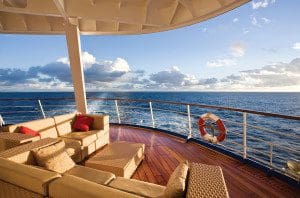 On an ocean cruise you see an endless expanse of blue water, maybe still as glass or maybe with whitecaps tossing about. As the ship cuts through the water at a decent clip, it leaves a v-shaped wake stretching far behind. At dusk, the watery reflection of the sun paints the sea shades of orange and gold as it melts into the horizon.
On an ocean cruise you see an endless expanse of blue water, maybe still as glass or maybe with whitecaps tossing about. As the ship cuts through the water at a decent clip, it leaves a v-shaped wake stretching far behind. At dusk, the watery reflection of the sun paints the sea shades of orange and gold as it melts into the horizon.
On a river cruise, there is always land within sight, sometimes close enough to converse with someone walking the riverside path! The panorama is ever-changing as you quietly sail past quaint villages at the water’s edge, ancient castles upon a promontory or landscapes of rolling hills planted with vineyards.
Size Does Matter
The size of ocean going vessels can vary greatly with the largest able to carry 5,000 passengers, while river cruises usually have only 80 to 200 guests per sailing. Ocean liners have decks stacked high above the waterline. Suites can be the size of a generously proportioned New York apartment and have spacious balconies where you can enjoy a morning coffee or private dinner for two.
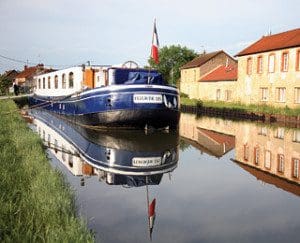 River boats typically have only three decks so they can glide under the many bridges along their route. Staterooms are functional and comfortable, but closer to the square footage of a college dorm room. French-style balconies open to the fresh air, but there’s no room for dining.
River boats typically have only three decks so they can glide under the many bridges along their route. Staterooms are functional and comfortable, but closer to the square footage of a college dorm room. French-style balconies open to the fresh air, but there’s no room for dining.
Because river cruises have fewer passengers and a high staff-to-guest ratio, service is extremely responsive. The ships officers are very accessible and regularly interact with the guests. While service levels can also be quite high on ocean cruises – particularly luxury lines – the ambiance is generally less intimate.
Dining and Entertainment Pros and Cons
For many travelers, learning about local cuisine and trying new foods is a favorite part of a vacation. Although some cruise lines take it to higher levels than others, let’s agree that both river and ocean cruises offer culinary excellence. The major difference is when and where you eat, so again, the pros and cons are quite subjective.
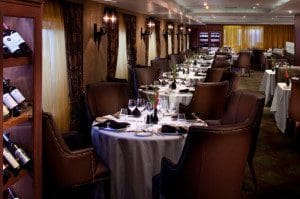
Ocean cruisers enjoy a choice of many dining venues, including traditional main dining rooms, specialty restaurants, late night options and room service. They may have a choice of open seating, making reservations or a buffet-style and only the top luxury ocean lines include wine and spirits with meals.
On river cruises, the options are much more limited. All meals are served in the open seating dining room at specific hours. Breakfast and lunch may have a two hour window, but guests are expected to arrive at a prescribed hour for dinner. There are usually no after-hours food services or room service, but meals do include all beverages and alcohol.

Similarly, the size of the ship and staff resources of river cruises keep evening entertainment to a minimum. While ocean cruises pride themselves on a plethora of Broadway-style shows, casinos, and every sport from ice skating to sky diving, river cruises go much lower key by having a local musician come aboard for a performance or a historian discuss the region’s past. You won’t find any children’s programs on river cruises – mainly because there are very few child guests – but they do include something most ocean cruises charge dearly for – free internet!
Going Ashore
 On river cruises, you’ll never have to queue for a tender to shuttle you to land because they dock right in town. You’ll dock daily and spend most of the day in port. Ocean cruises tend to build in “sea days” between ports and most only spend five to 10 hours in any port. Shore excursions such as walking tours and wine tastings are included on river cruises, although some special excursions that require admission tickets or include a special event may have a fee. Except for a couple luxury lines, excursions on ocean cruises are an additional expense.
On river cruises, you’ll never have to queue for a tender to shuttle you to land because they dock right in town. You’ll dock daily and spend most of the day in port. Ocean cruises tend to build in “sea days” between ports and most only spend five to 10 hours in any port. Shore excursions such as walking tours and wine tastings are included on river cruises, although some special excursions that require admission tickets or include a special event may have a fee. Except for a couple luxury lines, excursions on ocean cruises are an additional expense.
The Company You Keep
Because ocean cruises come in a range of price points, ship sizes and lifestyle niches, you’ll find a wide variety of demographics and personalities on board. There are plenty of opportunities to socialize and bond with your fellow passengers or you can easily keep to yourself and dine at a table for two.
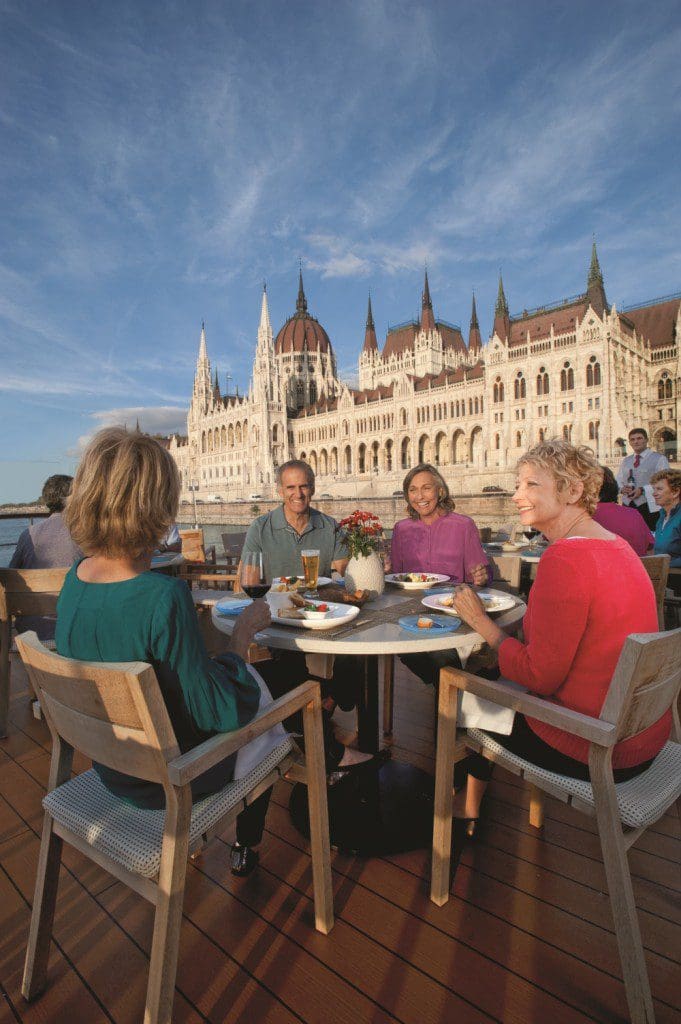 With the small size and few guests on river cruises, socialization is compulsory. You’ll be dining with others and interacting in public spaces. Fellow passengers tend to be educated and well-traveled, older and interested in a variety of topics. They expect to and enjoy meeting like-minded travelers, so it’s very likely you’ll make new friends.
With the small size and few guests on river cruises, socialization is compulsory. You’ll be dining with others and interacting in public spaces. Fellow passengers tend to be educated and well-traveled, older and interested in a variety of topics. They expect to and enjoy meeting like-minded travelers, so it’s very likely you’ll make new friends.
Which cruise style is best?
The good news is that there’s no right or wrong answer to which is best! The differences between river cruising and ocean cruising are entirely subjective. River cruising is generally more inclusive and intimate. Ocean cruising meets more diverse interests. It’s a personal choice of which style of cruising works for each individual but they aren’t mutually exclusive – you can certainly enjoy both!
To explore cruise options, please visit Covington’s cruise pages or contact our cruise specialists.
*Source: Cruise Lines International Association

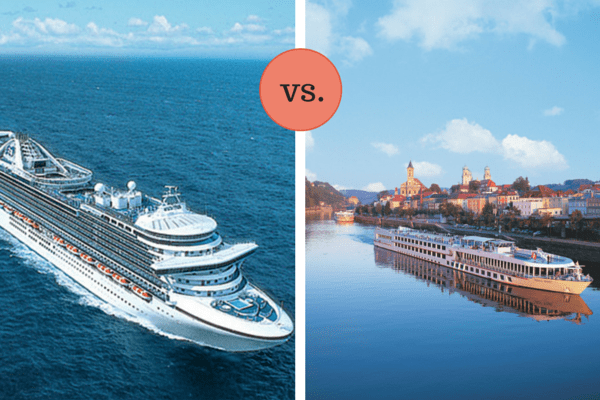
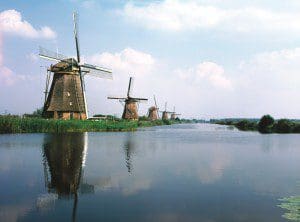





Uniworld offers a great multi-generational program. They cater to the young travelers as much as the seasoned explorer.
Thanks, Ron. Uniworld is one of our favorite river cruise lines!